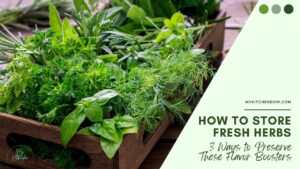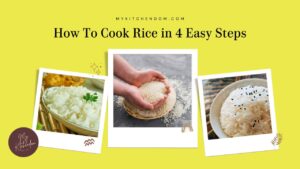For those who love eating carbs, pasta is probably high on their list of favorite foods to eat. And that’s not surprisingly so because not only is it easy to cook, it’s very versatile as well. But with so many types of pasta to try, learning the different pasta names can get a little daunting for some. I for one used to stick with using spaghetti – regardless of what I’m making, from Aglio e olio to carbonara to puttanesca.
I thought that there are particular types of pasta for particular pasta dishes – while that is very true, it’s also true that you can certainly substitute one for the other just as easily. And who’s going to judge anyway, right? So far, I’ve tried making ‘spaghetti’ meatballs using macaroni noodles and vice versa, I’ve made creamy chicken noodle soup using spaghetti noodles instead of elbow macaroni.
Do Different Pasta Shapes Taste Different?
You might be thinking, does the taste vary depending on the types of pasta? Well, apparently, they taste quite similar because pasta is basically made from durum wheat. It is the sauce that we cook or pair it with that pretty much dictates how is it going to taste and also what gives off the impression that this or that pasta tastes differently.
Pasta aficionados will probably disagree and say well there’s quality pasta and then there’s well – pasta. Sure, I totally agree. For one, cooked slow-dried pasta has a better texture compared to quick-dried pasta (the most common one that we see in grocery stores). Aside from texture, the slow drying process also produces a more somewhat porous pasta that causes it to become more absorbent of sauces.
So, if it fits your budget or every once in a while, it sure is worth it to go for the more expensive slow-dried pasta brands. But that is not to say that the everyday pasta we’re used to using will not do – you can absolutely still nail your pasta dishes as long as you cook your pasta al dente. After all, the sauce is pretty much the key, right?
13 Different Pasta Names
Are you ready to get to know the different pasta names? Here are the 13 that we think you would absolutely love to try the next time you’re making pasta. See also some cooking inspirations that may spark some ideas to level up your pasta dishes.
Different types of pasta:
- Rotoni
- Fettucine
- Pappardelle
- Tagliatelle
- Penne
- Farfalle
- Macaroni
- Tortellini
- Vermicelli
- Orecchiette
- Ravioli
- Manicotti
- Linguine
Rotini

It is made from spinning strips of pasta on a spindle rod which is exactly how they get that corkscrew or spiral shape. Rotini is perfect for holding pasta sauces whether it’s meaty sauces or vinaigrettes. This type of pasta can get tricky when made at home so you may want to opt for the store-bought ones.
Aside from your meaty red sauce, you can also serve it with an olive-based sauce with a healthy heaping of fresh herbs.
Fettucine
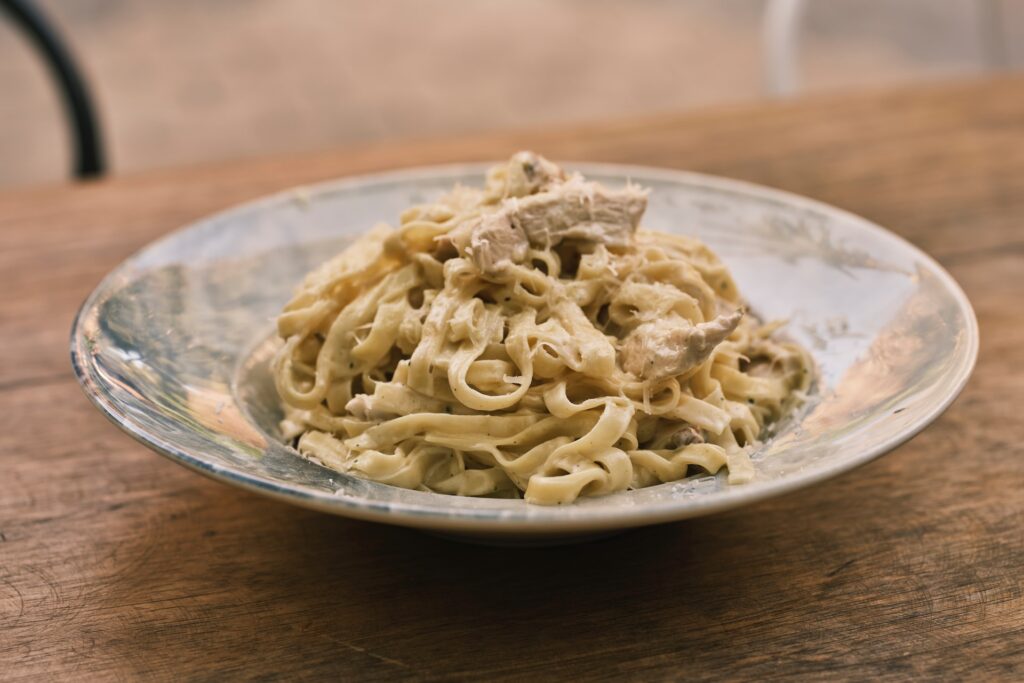
Fettucine is flat and wider like a ribbon which is quite a contrast to spaghetti which is round and cylindrical. This egg pasta can be substituted for any pasta dishes that you use long pasta like spaghetti or linguine. Unlike rotini, fettuccine can easily be made at home where the pasta dough is simply rolled out and hand-cut.
As previously mentioned, any pasta dish that calls for long pasta can absolutely use fettuccine. Think chicken alfredo pasta, carbonara, or fettuccine with tomatoes and garlic.
Pappardelle
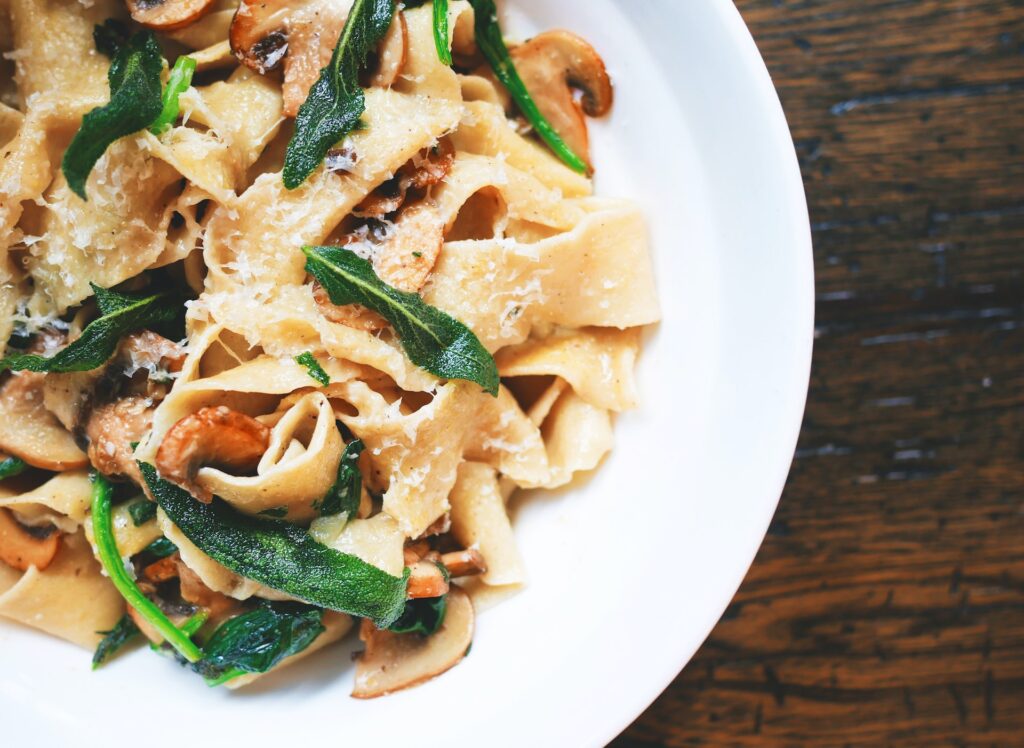
Pappardelle is another ribbon-like pasta very similar to fettuccine but this one is way wider – like noticeably wider. The name ‘pappare’ means to gobble up – and it really is what it looks like especially when serve with meat sauces, you just want to gobble everything up!
If you have a good ragu recipe or Bolognese sauce, it will work perfectly with pappardelle. Don’t like meat – no worries, try substituting portobello mushroom instead.
Tagliatelle

If it’s not fettuccine and it’s not pappardelle, then more likely it’s tagliatelle! This pasta is wider than fettuccine but narrower than pappardelle. It can be made conveniently at home using durum wheat or its alternative. This egg pasta is perfect for holding thick sauces because it’s a lot tougher than other kinds of pasta.
Aside from making the traditional Italian tagliatelle with porcini mushroom, this particular type of pasta will go perfectly with a meat ragu as well.
Penne
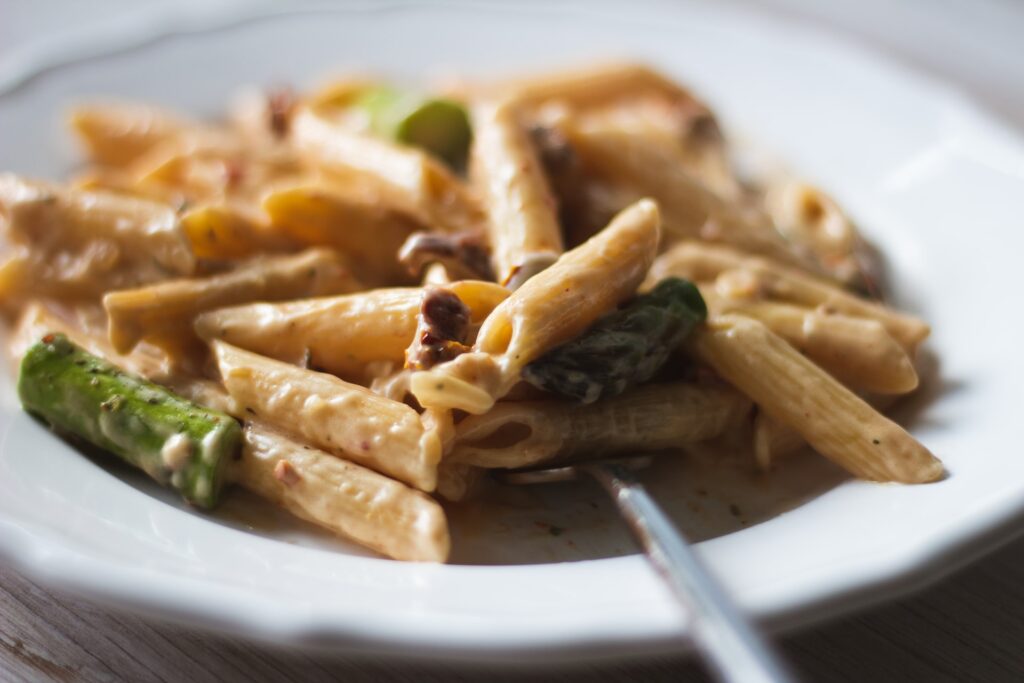
Penne is a tubular pasta with its ends cut at an angle. It’s also short and thick. There are basically two types – the smooth one called penne lisce or mostaccioli and the ridged one called penne rigate or simply penne. This pasta is great for holding on to sauces – imagine those tubes filled with delicious pairings, right?
You can absolutely use this type of pasta with your Alfredo, marinara, or pesto sauces or when you’re making pasta salad or baking pasta.
Farfalle
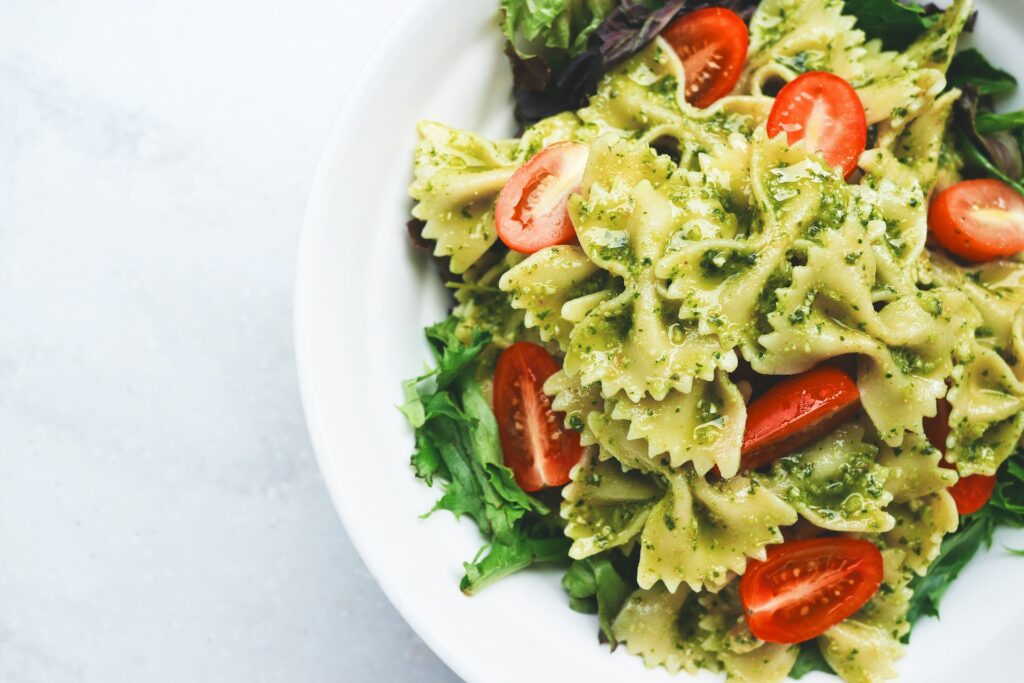
Farfalle pasta is shaped like a bow. Others prefer comparing it to butterflies due to its shape. Regardless of how you might want to describe it, they simply look absolutely pretty! Because of its little folds, you can already guess that it holds up well to meaty sauces. So, think rich and heartier sauces for this one.
Farfalle is also great for making pasta soup like minestrone soup as well as pasta salad like tuna salad. You can absolutely use it instead of elbow macaroni in macaroni salad.
Tortellini

Tortellini is one the types of stuffed pasta – traditionally it’s stuffed with a mixture of Parmigiano Reggiano cheese, egg, nutmeg, and meat. But you can also use just plain ricotta cheese, or with mushroom, prosciutto, or sausages – practically it’s really up to you, depending on how creative or experimental you are. Tortellini has a ring or navel-like shape that sort of resembles tiny wontons.
It’s perfect with your cheese, cream, pesto, or your favorite tomato sauce recipe. You can also make tortellini soup or you can also bake it with your choice of meaty soup.
Macaroni

Next to spaghetti, I think macaroni is the most common pasta in our house. Its tubular shape and short size make it ideal for baked dishes. I also have no problem using it with my red and white pasta sauces.
Aside from mac and cheese, this pasta is also perfect for making soups like chicken noodle soup and salads like the classic macaroni salad.
Vermicelli

Vermicelli looks like spaghetti but only thinner if it’s from the US but thicker if it’s from Italy. This is not to be mistaken with vermicelli from Asia because that one is made from rice and sometimes from mung beans. This type of pasta is also called angel hair pasta.
Aside from being a good substitute for pasta dishes that use long pasta, vermicelli is also great for making salads, fillings, and soup.
Orecchiette

Orecchiette is one of the ancient types of pasta whose name basically means ‘little ears.’ This is of course due to its shape having a small dome with a thinner center than its edge that resembles the ear.
This pasta is good to pair with your basic tomato sauce or pesto sauce. You can also substitute it for macaroni when making mac and cheese. Orecchiette will be lovely to use, too, in making soups.
Ravioli

Ravioli is another type of stuffed pasta like tortellini but the former is usually square (sometimes round) in shape with a flat underside and rounded top. It’s traditionally stuffed with meat, ricotta, and vegetables. To give you more ideas on what ravioli fillings to make, check out these four other choices.
Ravioli is usually served with tomato or cream-based sauces but it can also never go wrong with a delicious simple herbed brown butter sauce.
Manicotti

Manicotti pasta looks like large and thick pasta tubes with noticeable ridges. It’s very similar to cannelloni which is a bit smaller and thinner with a smooth texture. Sometimes these two are used interchangeably but now you know which is which.
Manicotti are usually stuffed with ricotta and then pair with some form of tomato sauce. They’re perfect for baking so imagine lasagna – it can perfectly replace your lasagna sheets and will work just fine with your meat sauce and bechamel sauce.
Linguine

Linguine may look a lot like fettuccine but take notice of their shape – the former is more elliptical than flat and visibly wider than spaghetti while the latter is flat and noticeably wider as well. It’s also made from flour and water while fettuccine is made from flour and eggs.
It will do just fine and is a great substitute for pasta dishes that use long pasta – so think thick tomato or cream sauces. This particular type of pasta will also work well with seafood accompaniment so something like shrimp scampi.
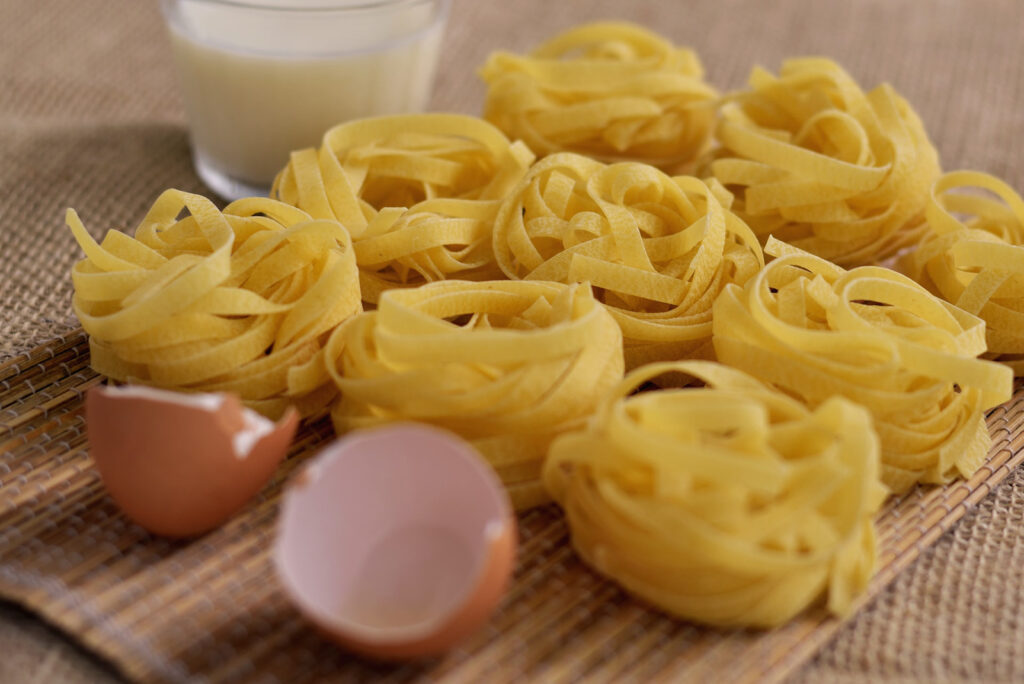
There are still so many different pasta names out there, these are just 13 of them. Not a bad start if you’re just learning pasta. But rest assured that once you have familiarized yourself with the above-mentioned ones, there are still other types of pasta out there to discover.



